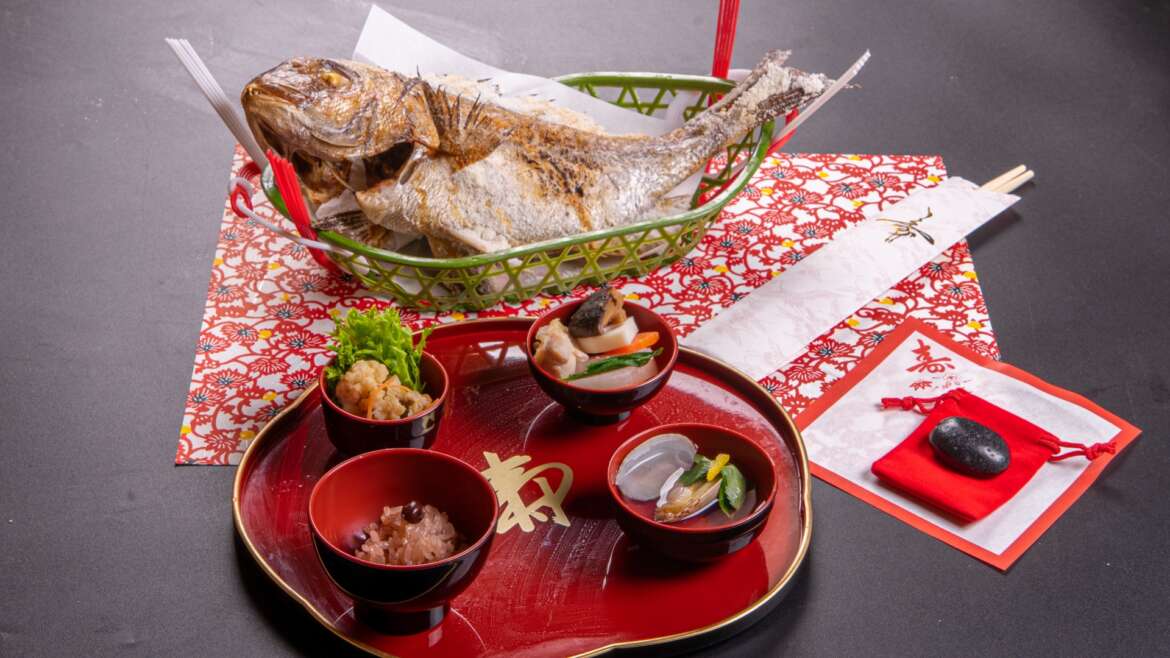“Okuizome” is a traditional Japanese ceremony held on a baby’s 100th day after birth. This special celebration is performed with the hope that the baby will never struggle for food throughout their life.
History of Okuizome
The origins of Okuizome date back to the Heian period. Originally known as the “Hundredth Day Celebration,” it was conducted to wish for the baby’s healthy growth and longevity. At that time, the ceremony primarily involved placing mochi in the baby’s mouth, but as time progressed, it evolved into using fish in a practice called “Manahajime.”
Meaning and Ritual of Okuizome
In this ceremony, an elder pretends to feed the baby using chopsticks, bringing food to the baby’s mouth for the first time. While the baby does not actually eat the food, this act is imbued with the hope that the child will never suffer from lack of food. The celebratory meal typically includes a full course of “ichiju-sansai” (one soup and three dishes), featuring whole fish and red rice among other items.
Timing and Participants
Typically, Okuizome is performed between the 100th and 120th day after birth, though the exact timing can vary based on the baby’s health and family circumstances. The participants are usually close family members like parents and grandparents, ensuring a comfortable environment for the baby.
Regional Variations and Modern Changes
Regional practices vary—for example, in Hokkaido, sweetened red beans are commonly used in the red rice, whereas in Osaka, octopus might be used to wish for prosperity. Additionally, due to changes in family structures and lifestyles, many families now celebrate Okuizome in a style that suits them without strictly adhering to traditional forms.
Preparation and Procedure
For Okuizome, special attire for the baby and special dishes are prepared. The “Hashiyaku” (person who performs the feeding mimicry) brings food to the baby’s mouth in front of the celebratory meal setting, symbolizing the wish for lifelong health and happiness. During the ceremony, a ritual involving a teething stone may also be conducted to wish for strong, healthy teeth.
Thus, Okuizome is not just a mere formality but a profound expression of love and wishes for the baby’s future, cherished by many families as an important opportunity to strengthen family bonds.


Leave a reply